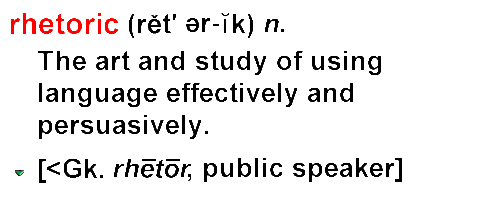Cushman, Ellen. “The Rhetorician as an Agent of Social Change,” College Composition and Communication 47:1 (Feb. 1996): pp. 7-28. Print.
As a counter-counterargument to Zorn’s piece (see PAB Post #3, above), Ellen Cushman takes us to the streets to where civic participation happens, beckoning us down for the ivory tower in order to bridge the distance between “critical theorists [who believe] that the primary means of affecting social change is to translate activism into liberatory classroom pedagogies” and instead “empower people in our communities, establish networks of reciprocity with them, and create solidarity with them” (7). She recognizes the “deeply rooted sociological distances” between the work of the academy, especially because of our focus on professionalization and specialization, and our local communities, which she speculates is why “academics have so easily turned away from the democratic project that education serves to ensure – civic participation by well-rounded individuals (8, 9). As a counter-counterpoint, her work recognizes the dissonance between course work and theoretical social engagement but also offers a means to blend civic participation and real world applicability with the goals of rhetoric and composition studies.
Cushman’s piece is useful because, unlike Zorn, she reminds us that these discussions of what is good writing, what is good reading, what is literacy, or rhetoric, or social action, take place in the privileged domain of the academy, where accessibility to resources and prestige is taken for granted. On the street level, teaching students to write letters for housing, resumes for jobs, fill out forms and understand systems has more immediate value to the community, and is proof of where civic participation is really located. Cushman argues that the daily interactions of people within their community have economic and political effects and that,
Often this type of social change would be overlooked or underestimated with the emancipatory theories we currently use. Those who choose to say resistance only counts when it takes the form of overt and collective political action might describe use as using nothing more than coping devices with this literacy.” (14)
Cushman is describing service-learning as an activist action that is observable and individualized with genuine empowerment effects. She uses the term “reciprocity” to provide a framework for working directly in a community, and as a moderating force.[1]
However, Cushman frames what she received from the community members she worked with – single mothers, low-income families with the “Black (their term) neighborhood in upstate New York” – as the gift of learning from them and getting to use their name and data for her dissertation work (7, 17). This is a fragile claim, as it’s unclear that the people discussed were aware of this reciprocal gift and viewed themselves as anything other than test subjects. In fact, what I know of service-learning pedagogy and research is that there is often a fear of paternalism, or a sort of condescending charity.[2]
What Cushman does not define is what role the rhetorician is playing in the model of activist learning she is presenting. Though her work is titled “The Rhetorician as an Agent of Social Change,” we are not given a discussion on how rhetoric is defined, what forms it takes in the academic/community relationship, and how we might study particular rhetorical communications for what is most effective in rhetorical discourse with a community.
[1] She is particularly concerned with a mode of domination that could result from a one-directional “gift-giving” in the community. She cites Bourdieu’s definition of reciprocity in his work The Logic of Practice (1990) as a model of how reciprocity should work in a community, though notes that his work was in observing relational bonds between kin-people and tribal chiefs.
[2] This does not suggest that service-learning courses do not make a positive and welcome impact in local communities, only that the relationship must be carefully negotiated – as Cushman notes. I am still skeptical that the project that Cushman describes defines a truly reciprocal relationship. For an interesting case-study on the potential do-gooder effects of service-learning course design, please read, “The Impact of a Service-Learning Course Design on White Student’s Racial Attitudes,” (Sara Houshmand, Lisa B. Spanierman, Amanda M. Beer, V. Paul Poteat, and Laura J. Lawson, 2014).

